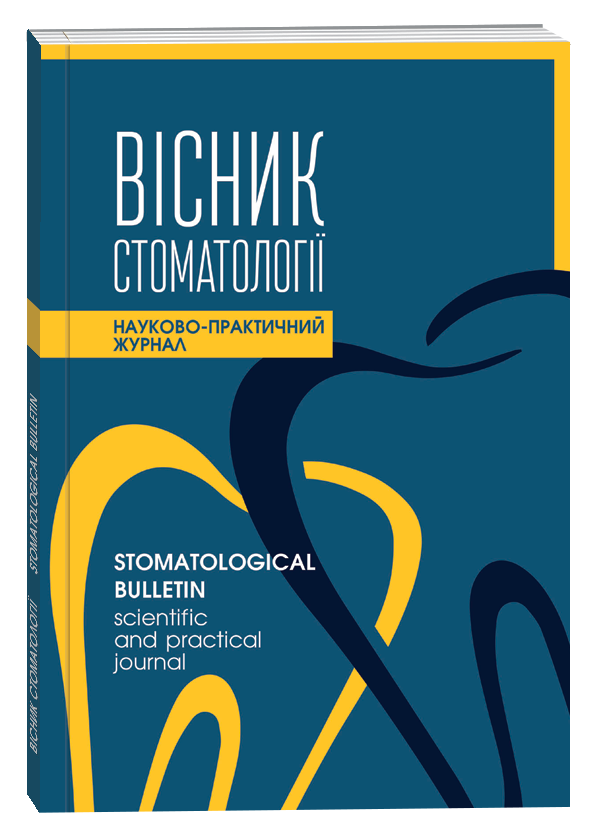ASSESSMENT OF THE STRUCTURAL AND FUNCTIONAL STATE OF BONE TISSUE IN SCHOOL-AGE CHILDREN WITH EPILEPSY
DOI:
https://doi.org/10.35220/2078-8916-2023-47-1.5Keywords:
children, dentistry, biophysics, bone tissue, epilepsy.Abstract
The study is dedicated to investigating the structural and functional state of bone tissue in early school-age children with epilepsy residing in Odessa and the Odessa region. The study involved 44 children aged 7-9 with epilepsy (the main group), as well as 90 children of the same age without somatic pathology (the comparison group). The functional state of bone tissue was investigated using an ultrasonic densitometer on the calcaneus bone. The main indicators of densitometry were used in the study, including the speed of ultrasound wave propagation, the decrement of broadband attenuation, and the bone quality index. The statistically significant difference between alternative quantitative features with a distribution corresponding to the normal law was estimated using Student's t-test. The difference was considered statistically significant at p<0.01. The assessment of densitometric indicators of bone tissue is an important diagnostic tool for detecting abnormalities in its quality, particularly in children with epilepsy. The results indicate significant disturbances in bone mineralization and density in this category of children, which may increase the risk of fractures and other skeletal disorders. Consideration of the obtained data is an important step in the development of therapeutic and preventive measures for children with epilepsy. Additionally, individualized approaches to the prevention and treatment of bone tissue disorders can be developed for each patient based on the degree of their severity and other risk factors. The obtained results emphasize the need for a comprehensive approach to the treatment of children with epilepsy, which should include not only seizure control but also attention to other aspects of health, including ensuring optimal mineralization and density of bone tissue, particularly in the upper and lower jawbones and teeth.
References
World Health Organization. Epilepsy. 2019. Отримано з https://www.who.int/news-room/fact-sheets/detail/ epilepsy.
Gude D. Epilepsy, anti-epileptic drugs and bone health in children. Journal of Pediatric Neurosciences, 2011. 6(1). 93 https://doi.org/10.4103/1817-1745.84425.
Zhang Y., Zheng Y. X., Zhu J. M., Zhang J. M., Zheng Z. Effects of antiepileptic drugs on bone mineral density and bone metabolism in children: a meta-analysis. Journal of Zhejiang University Science B. 2015. 16(7). 611-621 https://doi.org/10.1631/jzus.B1500021.
Pack A. M. The Association Between Antiepileptic Drugs and Bone Disease. Epilepsy Curr. 2003. 3(3), 91-95. https://doi.org/10.1046/j.1535-7597.2003.03306.x
Strumentazione Medicale. (m.d.). Sonost 2000 User's manual. Отримано з http://www.strumedical.com/ admin/allegati/126-Sonost_2000%20%20manuale%20 pdf.pdf (Перевірено 2 лютого 2017 р.)
Ланг Т. А., Сесик М. Как описывать статистику в медицине. Руководство для авторов, редакторов и рецензентов / пер. с англ. под ред. В.П. Леонова. Москва, Практическая Медицина, 2011. 480 с.









